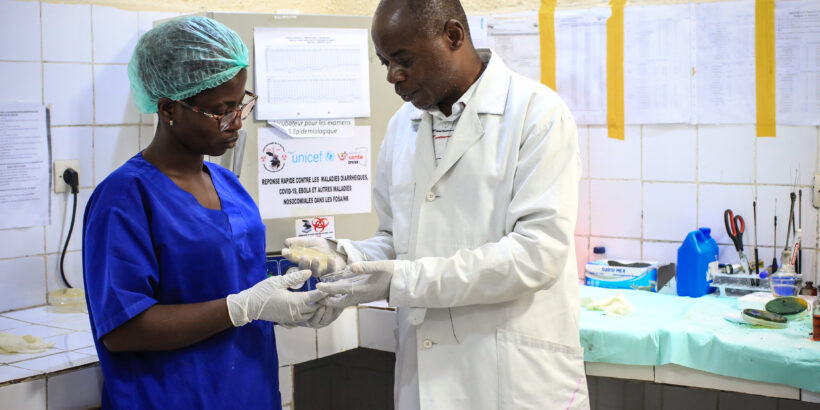Accurate diagnosis of typhoid is critical to ensuring that those who are sick receive timely medical attention and appropriate treatment. Current typhoid diagnosis has many challenges due to both the nature of the disease as well as the difficulties with available diagnostic tools. Typhoid symptoms are similar to many other diseases, including malaria, pneumonia, influenza, and other febrile illnesses. This leads to frequent misdiagnosis, and it demonstrates the need for more accurate and rapid diagnostic tests. The currently available diagnostics for typhoid are limited in both ability to identify the causative bacterium, Salmonella enterica serovar Typhi (Salmonella Typhi), and in practicality in low-resource, high-burden settings.
Current typhoid diagnostics
According to the World Health Organization, a definitive diagnosis of typhoid requires isolation of the Salmonella Typhi bacterium through blood culture. This method is considered the gold standard for typhoid diagnosis, though it still has serious practical limitations. Blood cultures are expensive and require specialized personnel and laboratory facilities to perform.
Blood culture facilities are rare in many low-resource countries and are often limited to major hospitals in large cities. When it is possible to perform a blood culture, only 40 to 60 percent of typhoid cases are correctly identified due to the low levels of bacteria in the blood during illness. The best time to test is the early days of infection, but the incubation period means that the highest levels of bacteria in the blood are likely present before clinical symptoms develop. The patient’s prior use of antibiotics as well as the volume of blood collected for the sample also affect the accuracy of blood culture. Furthermore, results are not available until several days after the blood is taken, limiting the test’s usefulness in a clinical setting where a healthcare worker must make a decision about treatment quickly. The development of a more cost-effective, rapid diagnostic test is needed to help avoid misdiagnosis.
Because of these limitations, the diagnosis of typhoid in most low-resource settings is made based on clinical criteria, which is challenging due to the nonspecificity of typhoid symptoms. Because typhoid symptoms are common to many other illnesses such as malaria and dengue, patients are frequently misdiagnosed. Difficulties with accurate typhoid diagnostics and appropriate treatment can lead to more serious complications and can contribute to drug resistance. Additional methods include urine or stool culture, which, while easier and cheaper to perform, do not have reliable accuracy. The Widal test, developed in the late 1800s, is simple and inexpensive, but it should not be used for diagnosis alone as it is frequently inaccurate due to cross-reactivity with other infectious agents.
Diagnostics in development
Several typhoid diagnostics that aim to overcome the shortcomings of existing methods, by being cost-effective and rapidly delivering accurate results, are in development. Three serological-based rapid diagnostic tests—Typhidot, TUBEX®, and Test-It Typhoid (KIT)—have shown promising initial results. However, they still need to be evaluated in larger trials in community settings. Further, new areas of scientific research have emerged in recent years, including transcriptomics and metabolomics, which may offer a potential future solution to diagnosing typhoid, but further investment and exploration in these areas is needed.
While investments in improved diagnostics can help the global and scientific communities to continue to improve our understanding of the full burden of typhoid, we know that typhoid is a significant public health issue and proven prevention and treatment solutions are available now. By accelerating access to safe water, sanitation, and hygiene interventions and typhoid vaccines, we can save lives and improve health without waiting for improved diagnostics.
Photo: TyVAC/Yves Ndjadi.



